Welcome to today's exciting lesson on Space Science! Today, we will take a journey through space, learning about planets, stars, and other celestial bodies. We will also learn various vocabulary words and idioms related to the solar system. Also discover some fun and unusual facts about our cosmic neighborhood!
List of Vocabulary Words
- Solar System
- Planet
- Star
- Orbit
- Asteroid
- Comet
- Moon
- Gravity
- Astronomy
- Galaxy
- Universe
- Light Year
- Black Hole
- Meteor
- Nebula
- Satellite
- Telescope
- Constellation
- Exoplanet
- Astronaut
- Spacecraft
- Milky Way
- Cosmos
- Big Bang
- Solar Wind
- Eclipse
- Space Probe
- Rings
- Atmosphere
- Terraforming
- Red Giant
- Supernova
- Quasar
- Pulsar
- Dark Matter
- Dark Energy
- Hubble Telescope
- Kuiper Belt
- Solar Flare
- Planetary Rings
- Space Shuttle
- Cosmic Rays
- Event Horizon
- Gamma Ray Burst
- Magnetosphere
- Heliosphere
- Interstellar
- Lunar
- Martian
- Astronomical Unit
- Rover
- Space Station
- Horizon
- Astrobiology
- Cosmonaut
- Extraterrestrial
- Photon
- Radio Telescope
- Singularity
- Terraform
Vocabulary Words and Meaning
Solar System:
The collection of planets, moons, and other celestial bodies orbiting our Sun. Example: Earth is a part of the solar system.
Planet:
A large celestial body that orbits a star. Example: Saturn is the sixth planet from the Sun.
Star:
A massive ball of gas emitting light and heat, such as the Sun. Example: The Sun is the closest star to Earth.
Orbit:
The path a celestial body takes around another body. Example: Earth orbits the Sun once every 365 days.
Asteroid:
A small rocky body orbiting the Sun. Example: The asteroid belt is located between Mars and Jupiter.
Comet:
An icy body that releases gas and dust, forming a glowing coma and tail. Example: Halley's Comet is visible from Earth every 76 years.
Moon:
A natural satellite that orbits a planet. Example: Earth's moon affects the ocean tides.
Gravity:
The force that attracts objects towards one another. Example: Gravity keeps the planets in orbit around the Sun.
Astronomy:
The scientific study of celestial bodies. Example: Astronomy helps us understand the universe.
Galaxy:
A large system of stars, gas, and dust bound together by gravity. Example: The Milky Way is our home galaxy.
Universe
All of space and everything in it. Example: The universe is vast and still expanding.
Light Year: The distance light travels in one year. Example: The nearest star to Earth is about 4.24 light years away.
Black Hole:
A region of space with gravitational pull so strong that nothing can escape. Example: Black holes can form from collapsing stars.
Meteor:
A small body from space that enters Earth's atmosphere, often creating a visible streak of light. Example: We saw a meteor shower last night.
Nebula:
A cloud of gas and dust in space, often a birthplace of stars. Example: The Orion Nebula is visible with a telescope.
Satellite:
A body that orbits a planet; can be natural or artificial. Example: The International Space Station is an artificial satellite.
Telescope:
An instrument that makes distant objects appear closer. Example: We used a telescope to observe Jupiter.
Constellation:
A group of stars forming a recognizable pattern. Example: The Big Dipper is a famous constellation.
Exoplanet:
A planet outside our solar system. Example: Scientists have discovered many exoplanets in recent years.
Astronaut:
A person trained to travel in space. Example: Neil Armstrong was the first astronaut to walk on the Moon.
Spacecraft:
A vehicle designed for travel in space. Example: The Apollo spacecraft took astronauts to the Moon.
Milky Way:
The galaxy that contains our solar system. Example: The Milky Way is visible on a clear night sky.
Cosmos:
The universe seen as a well-ordered whole. Example: The study of the cosmos reveals many mysteries.
Big Bang:
The theory that the universe originated from an enormous explosion. Example: The Big Bang theory explains the origin of the universe.
Solar Wind:
A stream of charged particles released from the Sun. Example: The solar wind affects Earth's magnetosphere.
Eclipse:
When one celestial body moves into the shadow of another. Example: A solar eclipse occurs when the Moon blocks the Sun.
Space Probe:
An unmanned spacecraft that gathers data from space. Example: Voyager 1 is a space probe exploring beyond our solar system.
Rings:
Thin bands of particles orbiting around some planets. Example: Saturn is famous for its rings.
Atmosphere:
The layer of gases surrounding a planet. Example: Earth's atmosphere protects us from harmful solar radiation.
Terraforming:
The hypothetical process of modifying a planet to support human life. Example: Scientists are exploring the possibility of terraforming Mars.
Red Giant:
A large, aging star that has expanded and cooled. Example: Betelgeuse is a red giant star.
Supernova:
A powerful explosion of a star. Example: A supernova can outshine an entire galaxy.
Quasar:
A very energetic and distant active galactic nucleus. Example: Quasars are among the brightest objects in the universe.
Pulsar:
A highly magnetized, rotating neutron star emitting beams of radiation. Example: Pulsars can be used as cosmic lighthouses.
Dark Matter:
A type of matter that does not emit light or energy, detectable by its gravitational effects. Example: Dark matter makes up most of the universe's mass.
Dark Energy:
A mysterious force driving the accelerated expansion of the universe. Example: Dark energy is still not fully understood by scientists.
Hubble Telescope:
A space telescope that has provided stunning images of the universe. Example: The Hubble Telescope has helped us see distant galaxies.
Kuiper Belt:
A region beyond Neptune filled with icy bodies and dwarf planets. Example: Pluto is located in the Kuiper Belt.
Solar Flare:
A sudden eruption of intense high-energy radiation from the Sun's surface. Example: Solar flares can disrupt satellite communications.
Planetary Rings:
Rings of dust and ice encircling a planet. Example: Jupiter also has faint planetary rings.
Space Shuttle:
A reusable spacecraft for transporting astronauts and cargo to space. Example: The Space Shuttle program ended in 2011.
Cosmic Rays:
High-energy particles from outer space. Example: Cosmic rays can pose a risk to astronauts.
Event Horizon:
The boundary around a black hole beyond which nothing can escape. Example: The event horizon marks the point of no return for matter falling into a black hole.
Gamma Ray Burst:
A brief and extremely energetic explosion in space. Example: Gamma ray bursts are the brightest events in the universe.
Magnetosphere:
The region around a planet dominated by its magnetic field. Example: Earth's magnetosphere shields us from solar wind.
Heliosphere:
The bubble-like region of space dominated by the Sun's influence. Example: The heliosphere extends beyond the orbit of Pluto.
Interstellar:
Located or occurring between stars. Example: Interstellar space is the region beyond our solar system.
Lunar:
Related to the Moon. Example: Lunar missions have provided valuable information about our natural satellite.
Martian:
Related to Mars. Example: Martian landscapes are similar to some deserts on Earth.
Astronomical Unit:
The average distance from Earth to the Sun, about 93 million miles. Example: Venus is about 0.72 astronomical units from the Sun.
Rover:
A vehicle designed to explore the surface of a planet or moon. Example: The Mars Rover has discovered evidence of past water on Mars.
Space Station:
A large spacecraft where astronauts can live and work for extended periods. Example: The International Space Station orbits Earth every 90 minutes.
Horizon:
The line where the Earth or sea seems to meet the sky. Example: The horizon can be seen clearly from the beach.
Astrobiology:
The study of life in the universe. Example: Astrobiology seeks to understand the potential for life on other planets.
Cosmonaut:
A Russian astronaut. Example: Yuri Gagarin was the first cosmonaut to orbit Earth.
Extraterrestrial:
Originating from outside Earth. Example: Scientists are searching for extraterrestrial life in the universe.
Photon:
A particle representing a quantum of light. Example: Photons are the basic units of light and other forms of electromagnetic radiation.
Radio Telescope:
A device used to detect radio waves from space. Example: Radio telescopes can observe phenomena invisible to optical telescopes.
Singularity:
A point in space-time where gravitational forces cause matter to have infinite density. Example: The center of a black hole contains a singularity.
Terraform: To transform a planet to resemble Earth, especially so it can support human life. Example: The idea of terraforming Mars is a popular topic in science fiction.
Idioms and Phrases related to Space 🌌
Shoot for the stars: Aim high or aspire to achieve great things.
Over the moon: Extremely happy or delighted.
Lost in space: Confused or disoriented.
A star is born: A new talent or phenomenon emerges.
Out of this world: Extremely good or impressive.
Black hole: A situation where things disappear or are lost.
Across the universe: Something that is known or recognized widely.
Beam me up: Take me away from an undesirable situation.
Down to Earth: Practical and realistic.
Eclipse someone: To outshine or overshadow someone.
In a galaxy far, far away: A phrase used to describe something that feels very distant or unlikely.
Gravity of the situation: The seriousness or importance of a situation.
Starry-eyed: Naively enthusiastic or idealistic.
Rocket science: Something very complex or difficult to understand.
Under the stars: Outdoors at night.
On another planet: Acting or thinking in a way that is disconnected from reality.
Cosmic scale: Something very large or significant.
Light years ahead: Much more advanced or ahead of its time.
In the dark: Uninformed or unaware.
Stellar performance: An outstanding or excellent performance.
Mars and Venus: Men and women, highlighting their differences.
Meteoric rise: A rapid and spectacular rise to success.
Once in a blue moon: Very rarely.
Rings around: To surpass or excel significantly.
Space out: To daydream or become inattentive.
The sky's the limit: There are no limits to what can be achieved.
Astronomical prices: Extremely high prices.
Blast off: To start something with great energy or enthusiasm.
Down to the wire: Very close to the deadline.
Fly under the radar: To go unnoticed or avoid attention.
Planetary alignment: When everything falls into place perfectly.
Rocket to fame: To become famous very quickly.
Stargazing: Daydreaming or contemplating.
Walking on air: Extremely happy or joyful.
Wormhole: A shortcut or fast way to achieve something.
Zero gravity: A state of weightlessness.
Brightest star: The most talented or outstanding person.
Cloud nine: A state of extreme happiness.
Horizon of possibilities: The potential for future opportunities.
Across the horizon: In the near future or upcoming.
Unusual Facts about Cosmos
- Venus spins backward: Venus rotates in the opposite direction to most planets in our solar system.
- A day on Venus is longer than a year: It takes Venus longer to rotate once on its axis than to orbit the Sun.
- Mars has the largest volcano: Olympus Mons on Mars is about 13.6 miles high, nearly three times the height of Mount Everest.
- Jupiter's Great Red Spot: This storm is so large that it could swallow Earth and has been raging for at least 400 years.
- Uranus rolls on its side: Unlike other planets, Uranus rotates on its side, possibly due to a collision with a massive object.
- Saturn's density: Saturn is less dense than water, meaning it would float if there were a body of water large enough to hold it.
- Pluto's heart: Pluto has a heart-shaped glacier that is larger than Texas.
- Earth's twin: Venus is often called Earth's twin because of its similar size and proximity to Earth.
- Dark side of the Moon: The far side of the Moon is often called the dark side, but it gets just as much sunlight as the near side.
- Neptune's winds: Neptune has the fastest winds in the solar system, reaching speeds of over 1,200 miles per hour.
We hope you enjoyed this journey through the universe and learned some new vocabulary and idioms along the way. Remember, the sky's the limit when it comes to exploring the cosmos!

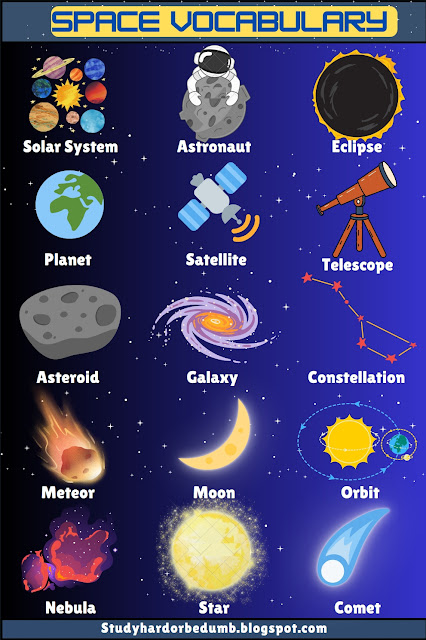


















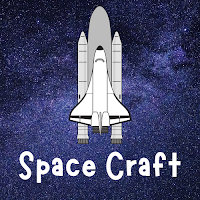
















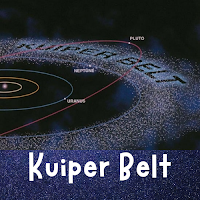









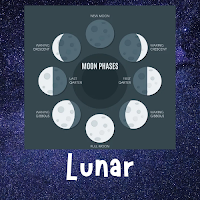













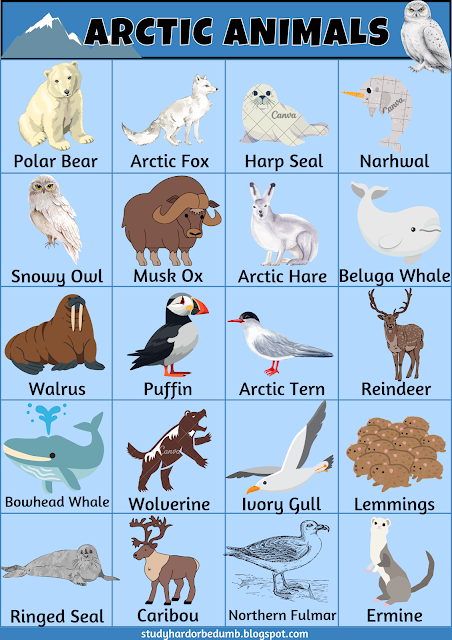
Comments
Post a Comment